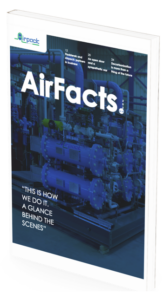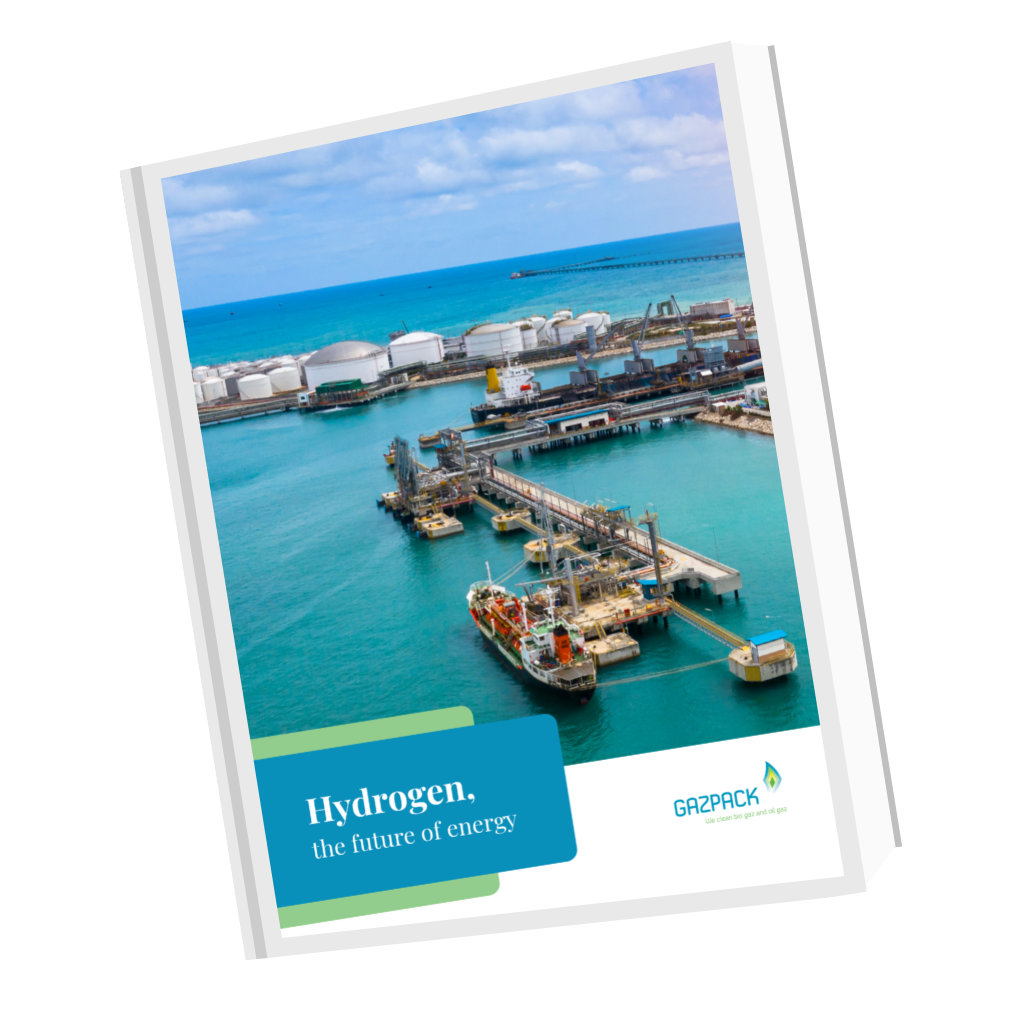Amine Gas Treating & Amine Scrubbing
Looking to explore the world of biogas processing and handling solutions? Get instant access to our documents about biogas technology.
We all want a cleaner atmosphere and environment. The air we breathe; water we drink and wash with; and land we tread upon directly impact our health — individually and as a species. A difficult truth, though, is that as our quality of life improved over the centuries, the climate and habitats of this earth began to decline in terms of health and sustainability. Fortunately, science and technology help to mitigate this ecological degradation and restore purity to our natural surroundings. One such way in which this occurs is the amine gas treating of collected natural gas for safe use.
Is Natural Gas Unsafe?
In its original state, natural gas contains large amounts of what are known as acid gases or sour gas. Specifically, and in large part, these include hydrogen sulfide (H2S) and carbon dioxide (CO2). Hydrogen sulfide is extremely toxic as concerns human health: dizziness, reduced attention and impaired sensory-motor capacity are the more mild of its physiological damages. H2S can also cause severe respiratory distress (including pulmonary edema), painful skin rashes, brain damage, coma and — in the extreme — death. Aside from its health hazards, this acid gas can also do harm to pipelines and other transport vessels by corroding the materials that compose them.
Excess carbon dioxide degrades the heat value of natural gas. This particular energy source sports the best heat values among other fossil fuels. Abundant CO2 means that more gas will need to be burned to get the same intensity of heat as natural gas that contains less CO2. Thus, it is counted along with H2S and a few other less prevalent compunds as sour gas. Because of this, gas with a high carbon dioxide requires — as with high H2S presence — application of the amine sweetening process.
What Does Amine Gas (Process) Treating Involve?
Amines are substances derived chemically from ammonia. Recognizable in this class are amino acids, so vital to complete nutrition. Different agents are used for industry and the amine treating process. They are integral in the procedure known as amine scrubbing. Taking place in an amine treatment unit, scrubbing is in this instance tantamount to absorption. The gas stream makes contact with the amines whereby the acid gas is conveyed from the natural gas stream to the liquid absorbent. In this fashion, amine H2S removal is accomplished and the natural gas is sweetened.
Certain reactants are more effective than others in amine scrubbing for CO2 capture. Hungarian chemical engineering researchers identify aqueous monoethanolamine (MEA) as the most commonly used solvent for the purpose of amine CO2 scrubber CO2 absorption. Overall, this removes 85 percent of carbon dioxide, leaving the natural gas at 95 mole percent purity. Meanwhile, the MEA has a lower flow rate than other amines, according to this study. at the same time, other conditions may make alternative substances more appropriate.
Are Amines Re-Usable?
Amines are not a one-and-done scrubber. They can be and are recycled for further use. As adsorbent covering for silicates, they are routinely reprocessed and used for scrubbing as well as alternative purposes. The process by which amine regeneration occurs is called calcination. This refers to a heating process conducted under strict thermal and environmental parameters. Some amine samples proved functional after 15 scrubbings due to calcination treatment. According to some research by chemical engineers, re-used amine silicates lose very little efficiency with regard to CO2 adsorption. This is but one reason why an amine regeneration unit is such an important investment for those who utilize amines for sour or acid gas sweetening.
Method to Select the Best Amine for Sour Gas Scrubbing
Noted above is the effectiveness of monoethanolamine (MEA)as a scrubbing agent. MEA is a primary amine, as opposed to secondary and tertiary amines. This distinction simply points to the number of hydrogen atoms have been replaced from the original ammonia. Determining the nature of the derivatives is done by allowing a reaction of amines with nitrous acid. When nitrous acid reacts with primary amines, nitrogen is produced. This result does not occur with the other two amine types. Amine acid gas refers to the acidic gas mixture, predominantly consisting of CO2 and H2S, that is absorbed by the amine solution in the gas sweetening process.
Amine Sweetening Process
Understanding the amine gas sweetening process is critical for industries where the removal of acidic components like CO2 and H2S from gas streams is needed. An amine sweetening unit is utilized for this purpose, employing an aqueous solution of materials such as MEA (Monoethanolamine), DEA (Diethanolamine), MDEA (Methyldiethanolamine), or a combination thereof. The amine gas sweetening process diagram provides a visual representation of the entire procedure, detailing each step from the introduction of the gas to the amine solution, the absorption of acidic gases, the regeneration of the amine, and finally, the release of the ‘sweetened’ gas. This amine gas sweetening process is widely employed in industries like natural gas processing, petroleum refining, and syngas production, where it’s crucial to purify gas streams for efficient operations and environmental compliance.
The amine CO2 removal process, also known as CO2 amine scrubbing, is a critical technique used in industries that require purified gas streams, such as the natural gas industry. It involves the use of amine solutions to selectively absorb CO2 and other acidic gases from a gas mixture. In the context of the natural gas industry, CO2 removal from natural gas using amine is essential to increase the calorific value of the gas and to prevent corrosion in transportation pipelines. The scrubbing process involves the contact of the gas with an amine solution, typically Monoethanolamine (MEA), Diethanolamine (DEA), or Methyldiethanolamine (MDEA), which binds with the CO2 molecules, effectively ‘scrubbing’ them from the gas stream. The solution is then regenerated, releasing the CO2 for capture and allowing the amine to be recycled back into the system.
In Summary
The use of amines to cleanse contaminants from natural gas serves the causes of environmental sustainability and public health. It also serves the economy, since natural gas possesses high heat values. Not all amines are created equal, of course, and those that do the best job of acid gas scrubbing are methodically discerned and utilized.




